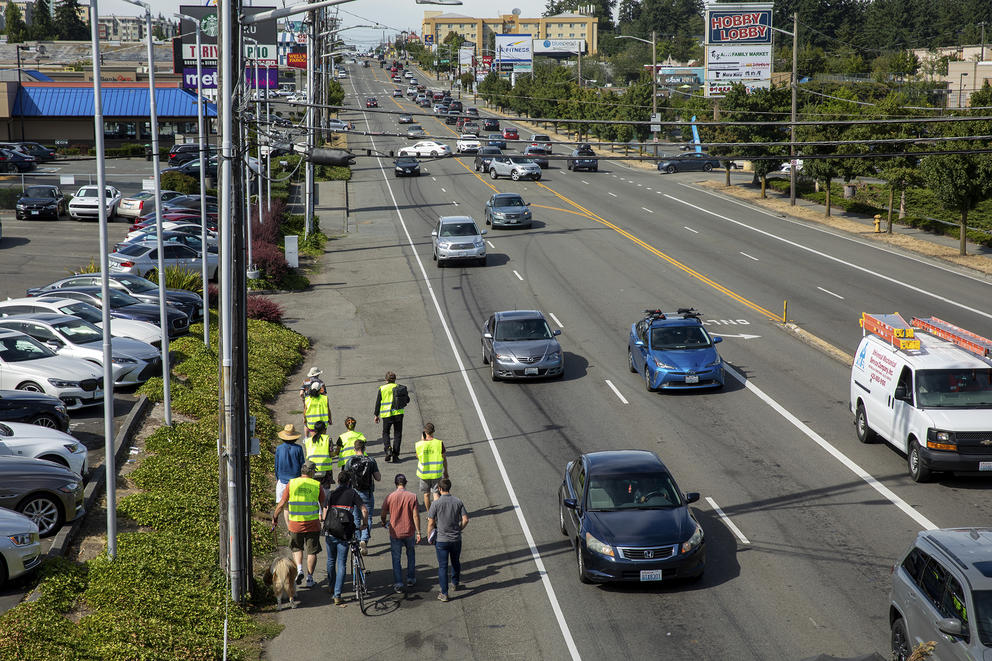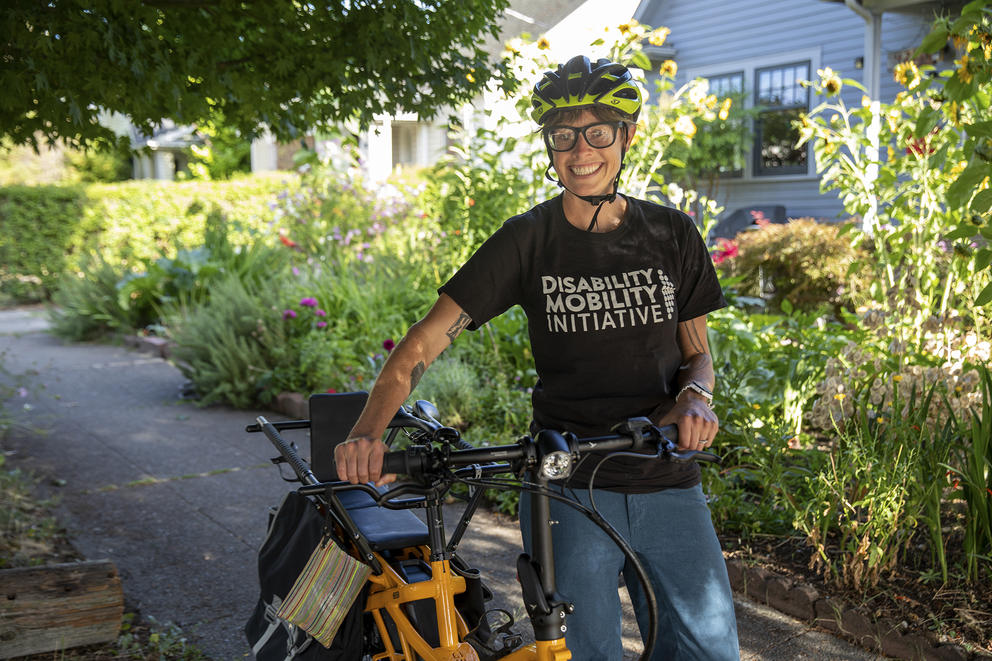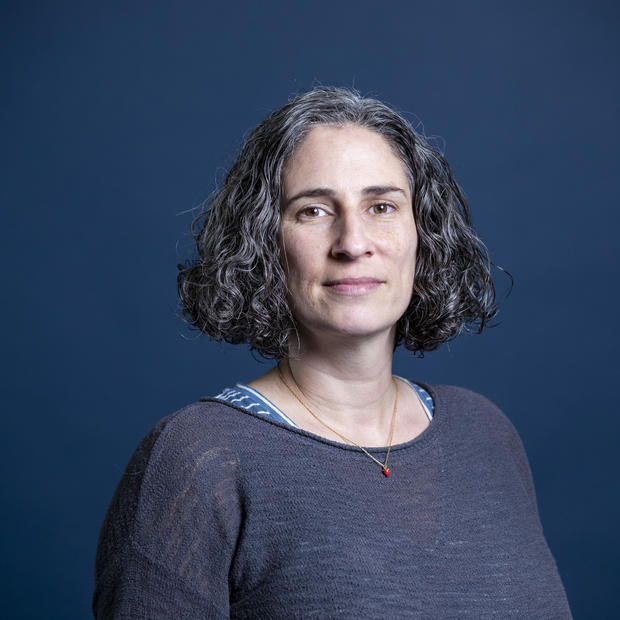While her shoulder has mostly healed from the hit-and-run incident a decade ago, she said PTSD lingers.
“I don't take it for granted when I see the walk sign that I will be safe in the crosswalk,” Lehman said.
Like so many other so-called Vision Zero cities, which have the lofty goal of eliminating traffic fatalities and serious injuries, Seattle struggles to lower those numbers, which averaged about 20 deaths a year, mostly among pedestrians and cyclists, over the past decade.
Pedestrians and cyclists bear the brunt of those fatalities. As fewer people die inside vehicles, more and more people on foot or bikes are killed. Involved in about 10.5% of police-reported collisions, pedestrians and bikers accounted for 72% of traffic deaths and more than half of serious injuries, according to a Seattle Department of Transportation analysis of 2019 traffic data.
The same story plays out nationally; between 2009 and 2019, pedestrian traffic deaths increased more than 50%, according to data fromthe National Highway Traffic Safety Administration, while deaths of people inside vehicles declined 5%.
Reimagining roads
Like little ducklings in bright green safety vests, a group of a dozen neighbors, transportation planners and mobility advocates follow Lee Bruch during a walk audit along a stretch of Aurora Avenue, taking note of obstacles they encounter. Bruch, a member of the Aurora Reimagined Coalition, points out long stretches of missing sidewalks and a pedestrian bridge inaccessible to bikes, strollers and wheelchairs.
The north-south corridor through Seattle — up to seven lanes wide in some parts — splits neighborhoods in half like a rushing river. Hotels, tattoo parlors, auto dealers, strip malls, vacant storefronts and fast-food restaurants line the state highway. Despite the narrow sidewalks (where they exist) that leave pedestrians just inches from speeding vehicles, plenty of people on foot make their way down Aurora.
“There's a gap between how the streets function and how people want them to function,” said Tom Lang, another member of the Aurora Reimaged Coalition.
Spurred by $2 million from the Washington state and Seattle departments of transportation to study the corridor, several neighborhood groups mobilized with the tagline “99 problems and Aurora has them all.” Seeing a chance to influence the future of the avenue, the group plans to walk the entire corridor, brainstorming ideas for a redesign that doesn’t just try to move cars as quickly as possible. Instead, they are advocating for a focus on how pedestrians and bikers move through the space.
“People want calmer streets, wider sidewalks, bike lanes and street trees,” Lang said, “not the urban highway we have now, where it's hard to walk down the street and even harder to cross it.”
Aurora is not just hard to cross, it’s also dangerous. Since the city launched Vision Zero in 2015, 20 people have died in traffic collisions along Aurora, according to SDOT. Many years, Aurora ranks as one of the most dangerous streets in Seattle — often swapping the title spot withS South Seattle’s Rainier Avenue.
About half of fatal or serious-injury collisions in the city occur along just 11% of the city’s streets. They tend to be multilane, high-volume, high-speed roads like Aurora and Rainier, according to SDOT.
In different parts of the city, neighbors along other busy corridors are pushing for the same things — more pedestrian-friendly roads with wider sidewalks, more crosswalks, more trees and bike lanes.
Bruch, who was leading the group down Aurora, can picture a future road with all these amenities.
“But Aurora has not lived up to that potential because of the city’s neglect,” Bruch said.
Amandeep Kaur, who has a vision impairment, navigates Aurora with her cane as part of a group doing a walk audit along the road. The intern with Disability Rights Washington notes that intersections have accessible traffic signals that vibrate to alert pedestrians when they can cross, but not complete sidewalks. (Lizz Giordano for Crosscut)
Achieving Vision Zero
In 2020, although traffic volumes decreased around Seattle, according to SDOT, traffic fatalities didn’t. Instead, there were 25% more deaths than average last year. This year is on pace to be an even deadlier year.
Vision Zero concedes that people aren’t perfect, so city streets must be designed so hat when a collision happens, it’s survivable. That really comes down to speed.
A pedestrian has a 90% chance of walking away without serious injury after being hit by a vehicle traveling 16 miles per hour, according to an AAA study. As speeds rise, survivability rapidly plunges: at 30 mph, there’s roughly a 50/50 chance of death or serious injury, and at 45 mph, those odds become nine in 10.
A few studies point to increased vehicle sizes also playing a role in the rising deaths of people outside cars.
One traffic calming tool, congestion, was unavailable during the pandemic as many people stayed home. The resulting speed increases could have contributed to the increase in fatalities in 2020, SDOT has said.
Seattle’s first big step toward Vision Zero was to lower speed limits throughout the city. The change, which dropped most arterial street speed limits to 20 to 25 mph for residential streets, began in 2016 and wrapped up in early 2021, as crews finished switching out speed limit signs. (On parts of Aurora, long considered an urban highway alternative to Interstate 5, speed limits remain 40 mph). Pointing to early data, SDOT says the changes have resulted in lower speeds and fewer crashes in a few study areas.
Lowering speed limits is key, according to Leah Shahum, founder and executive director of the advocacy group Vision Zero Network. It’s also one way she judges whether cities are taking Vision Zero seriously.
“If they still have speed limits set at 45 mph in busy walking and biking areas, if they still have superwide streets — they’re not being serious,” she said.
While the overall numbers of traffic fatalities and severe injuries aren't decreasing in Seattle as hoped, Shahum said, the number generally isn't rising like in many other U.S. cities that have Vision Zero campaigns.
Redesigning roads is another method SDOT uses to slow drivers. This can include eliminating lanes — what transportation planners refer to as a road diet — to make the roadway feel smaller and more constrained. This was done along parts of Rainier Avenue as it passes through the Rainier Valley. Other safety projects around the city include constructing and repairing sidewalks, constructing speed bumps and giving pedestrians a head start at traffic signals.
“I’m encouraged by what we are seeing in Seattle,” Shahum said. “It's really clear where investment and changes in safer road design, and in particular lowering speeds — in Seattle and other places, that does have an impact.”
“The big reality, making a Vision Zero commitment and starting to invest in a real paradigm shift on how we use our streets, isn't going to yield results in two or three or four years,” she said. “It’s not going to happen.”
But as vehicles grow bigger, the problem of pedestrian deaths becomes more pressing, Shahum added.
While U.S. cities wrestle with how to reduce traffic fatalities, European cities lead the way toward Vision Zero. Many made the commitment decades ago, and along with redesigning streets and lowering speeds, the European Union has passed much stronger safety standards than the U.S., according to Shahum.
Not just an infrastructure problem
“We have to look at ways to redesign the road so people aren't inclined to drive so fast,” said Allison Schwartz, the Vision Zero coordinator at SDOT. “We have a lot of tools that we know work; we need to pursue them more aggressively.”
Reversing decades of thinking that focused street design on vehicle speeds and throughput won’t happen overnight, she said. And that change will take political will and acceptance from communities, she added, but also getting people out of cars with a robust transit system.
“If we want to reduce our fatalities and our serious injuries,” Schwartz said, “I think it’s very much tied to making sure we are increasing reliable and affordable transit options.”
It’s a step in the right direction to talk about redesigning the road system, said Zivarts.
“But we need to be talking about more than just infrastructure, but also how different modes are prioritized and how it feels to be in a space as a pedestrian,” Zivarts said.
These days the streets belong to vehicles and not people. When they closed her street for a block party, it brought families and kids together.
“These are kids, even though we all live on the same block, who don't all get to hang out, especially the younger ones, who aren't allowed to walk down the block on their own,” Zivarts said. “And it made me realize how different communities and neighborhoods must have felt before parents had to worry about cars.”
She also wants the city to add crosswalks to ensure people don’t have to walk far to find one and complete the sidewalk network, making sure it's not full of cracks and huge bumps, and providing plenty of curb ramps for Americans with Disabilities Act accessibility.
Zivart's list goes on.
This includes better connections along greenway routes, which are supposed to be low-stress streets that prioritize cyclists and pedestrians, so users don't have to dodge traffic to cross larger streets. And the list should consider limiting rights on red at more intersections, and perhaps eliminate left turns on some streets, she added.
Most mornings, Zivarts and her son trek downtown by bike from their home in the Rainier Valley. She prioritizes safety, which — in Seattle — often leaves her staring up from the bottom of some steep hills.
“I look for the routes that have the least amount of traffic and crossings that are as least sketchy as possible,” Zivarts said.
Her daily rides stopped for a time after she and her son were hit in a crosswalk near an I-5 on-ramp in Beacon Hill. Zivarts feels lucky she and her son came out unscathed. The driver, making a right on red, didn’t see her and her son as the car rolled through the crosswalk.
“It happened really slowly,” said Zivarts, “but it really freaked me out. After that I stopped biking with the kid.”
The collision with her son might have pushed Zivarts into a car for at least a while if that was an option, she said, but a vision impairment leaves her unable to drive. So instead, her morning commute became a five-mile run pushing her kid in a stroller along the way.
Eventually Zivarts got back on her bike.
“The fear sorta wears off,” she said. “And you are like: I can do this.”
South Seattle, where Zivarts was hit, carries a disproportionate number of traffic fatalities compared with other areas in the city. In many years, over twice as many people die in collisions in City Council District 2, which includes Rainier Valley, SoDo, and parts of the Chinatown-International District, as in any other district in the city.
During the first half of 2021, more than half of all Seattle traffic fatalities occurred in District 2. Two-thirds of those involved a pedestrian or cyclist.
The south end of Seattle is an underserved community, said Phyllis Porter, a transportation access and equity advocate. Fewer resources are spent in the area.
Porter helped push for reduced speed limits in the city after seeing a vehicle crash into two businesses in Columbia City. She and other transportation activists observe drivers still speeding down Rainier, some using the new bus and center turn lanes as a passing lane.
To reduce traffic deaths, people in the community need to do their part by slowing down, Porter added. “They have to obey the laws that have been set to keep them safe,” she said.
And SDOT and the city need to appropriate the money for safety projects to show “they value the survival of the community,” she added.
While she feels much safer walking along Rainier after the city redesigned the road near her home, Porter is not totally at ease.
“I always have one eye open, because I know the history of Rainier,” she said.






